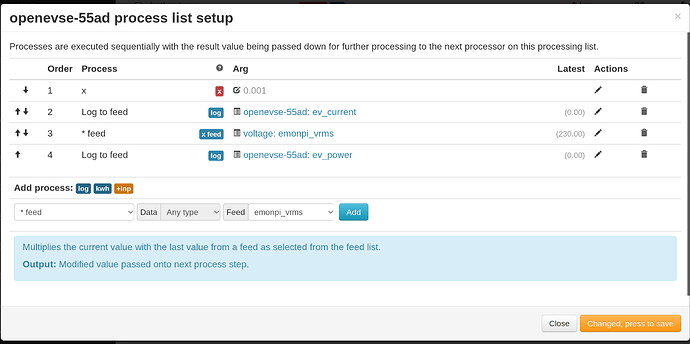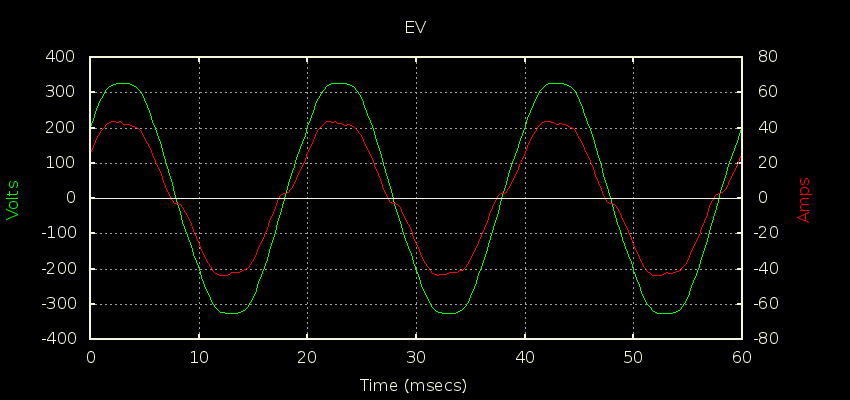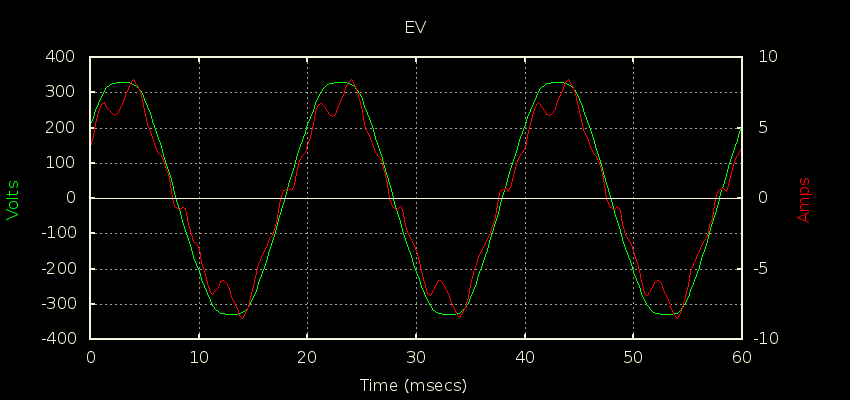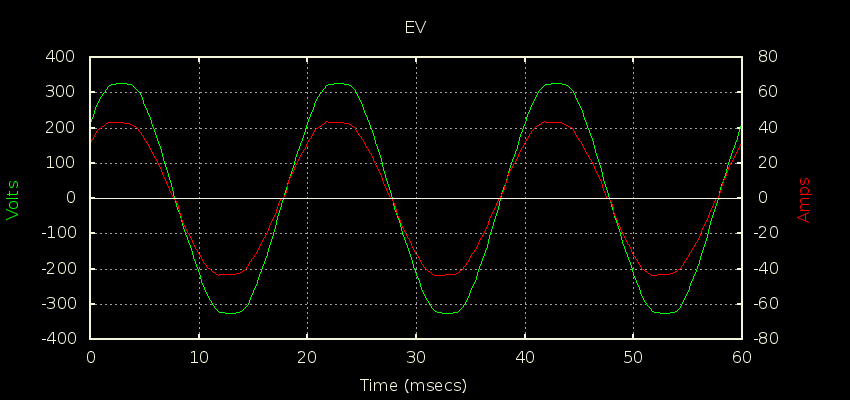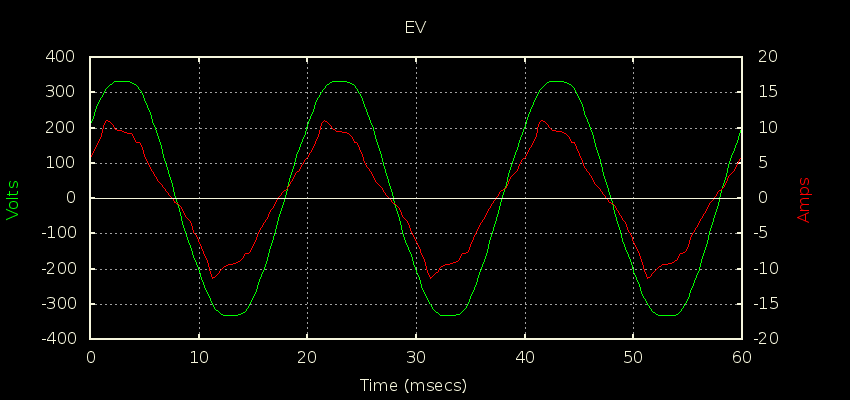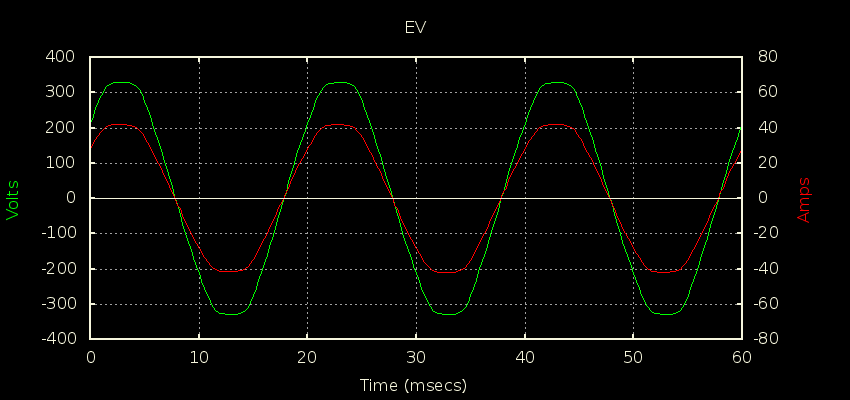Are you suggesting “230” (or 3 × 230) to allow for a non-unity power factor - because the UK ‘centre’ voltage is likely to be closer to 240 V ?
I’m not sure how your supply compares to ours, but I see about a 5V drop when the EV starts sucking 32A. That’s measured at the fuse box so doesn’t include any additional drops in the run to the EVSE (single phase setup).
I also had a chance recently to capture the current signatures of the on-board chargers of a few different EVs at various power levels:
MG ZS charging at 30A (though 32A was on offer)
MG4 charging at 30A (though 32A was on offer)
Tesla Model 3 charging at 32A
Tesla Model 3 charging at 5A
EQC 400 charging at 32A
EQC 400 not charging, but pre-heating the cabin
Volvo XC40 at 32A
Volvo XC40 at 16A
Volvo XC40 at 6A
That’s about 360 - 370 kVA, so that’s about the same as an urban UK domestic supply. I can’t speak for a rural supply, but it could well be significantly lower.
How did you work that out? Is that some rule-of-thumb for distribution transformers based on the effective impedance?
Ohm’s Law. If you say the supply has a source resistance (not impedance), it’s going to drop a voltage depending on the load (again a resistance). You know both, so you can calculate the supply internal resistance (again, not impedance). That determines the prospective fault current, and that’s the maximum (or rather, more than the maximum) power you can get in the fault. It’s not accurate, but it gives a ball-park value.
Your supply fuses will operate long before that current is reached, but that’s where it’s heading.
I think the UK network is designed so that it’s around the 300 kVA mark for most consumers - but I’m really a drives & controls applications person, not a power systems one.
Nice, that’s fascinating. I think it would be worth creating a dedicated thread for these captures. It would be interesting to build up captures for lots more EVs. I would be interested to see how a Leaf and a Zoe compare, I’ve heard a Zoe has poor power factor.
I think the reason for the double spike on the Model 3 is because the model 3 has a 3x 16A chargers (three-phase 11kW) so to achieve 32A single-phase the car connects multiple phases of the onboard charger together.
Thanks for this. Since I have all 3 phase voltages measured elsewhere, would it be better (or worse) to create a feed with an average voltage calculated from the 3 voltages and then use that feed to multiple in this input processing, or is it “just not worth it”?
